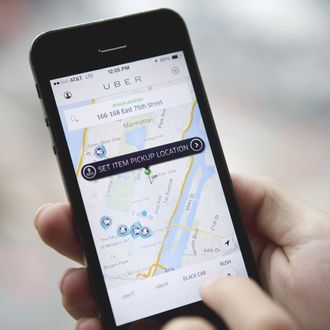
A significant component of Uber’s business model revolves around surge pricing: As requests for cars go up, so can the price of a ride — in part to get more cabs on the road in the area. Surges can be influenced by things like the weather (the old it’s impossible to grab a cab in the rain mentality holds true even if you hail that cab through an app) or time and date (a ride home at 12:02 a.m. on New Year’s Day is going to cost you). Surge prices start at 1.1 times the cost of a standard ride and go up from there.
But, weirdly, the company says slight differences in surge prices determine whether or not riders will accept a higher fare. And for the rider it often means paying more. Uber’s head of economic research, Keith Chen, recently told NPR’s Shankar Vedantam on an episode of The Hidden Brain podcast that people are more likely to take a ride priced at 2.1 times regular cost than they are at 2.0.
According to Chen, if an Uber user opens the app to see 2x pricing, they’ll tend to think it’s “capricious and unfair,” a random price point “somebody just made … up.” Meanwhile, a ride priced at 2.1x feels logical, like there is a “smart algorithm in the background.” (Which there is, it’s just not an algorithm necessarily designed to benefit Uber users.)
Luckily for the rider, surge prices and requests for rides are inversely related (Chen notes that between 1x and 1.2x they see a drop of 27 percentage points in requests). If you can wait ten minutes and try again, you’ll usually find that the pricing will drop back down. Or, at the very least, you might be willing to accept a surge price set at a round number.





























